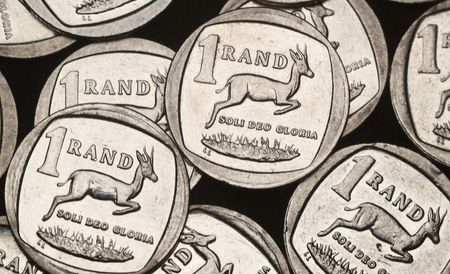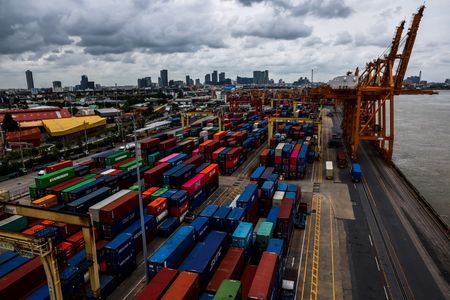By Nicole Jao
NEW YORK (Reuters) -Oil prices edged lower on Monday, as investors weighed new threats from U.S. President Donald Trump for sanctions on buyers of Russian oil that may affect global supplies, while still worried about Trump’s tariffs.
Brent crude futures fell 79 cents, or 1.12%, to $69.57 a barrel by 1:04 pm EDT (1704 GMT). U.S. West Texas Intermediate crude futures were down $1.07, also 1.56%, to $67.38.
Trump announced new weapons for Ukraine and threatened to hit buyers of Russian exports with sanctions unless Russia agrees to a peace deal in 50 days.
Oil prices rallied early, on expectations that Washington would impose steeper sanctions. But prices retreated as traders weighed the 50-day deadline.
“The market took it as a negative because there seemed to be a lot of time to negotiate,” said Phil Flynn, senior analyst with Price Futures Group. “The fear of immediate sanctions on Russian oil is further off in the future than the market thought this morning.”
Last week, Trump said he was due to make a “major statement” on Russia on Monday, having expressed his frustration with Russian President Vladimir Putin due to the lack of progress in ending the war in Ukraine.
Russia’s seaborne oil product exports in June were down 3.4% from May at 8.98 million metric tons, data from industry sources and Reuters calculations showed.
A bipartisan U.S. bill that would hit Russia with sanctions gained momentum last week in Congress. European Union envoys, meanwhile, are on the verge of agreeing an 18th package of sanctions against Russia that would include a lower oil price cap.
Investors were also eyeing the outcome of U.S. tariff talks with key trading partners.
The European Union and South Korea said on Monday they were working on trade deals with the U.S. that would soften the blow from looming tariffs as Washington threatens to impose hefty duties from August 1.
EU member states find Trump’s tariff threat “absolutely unacceptable”, Danish Foreign Minister Lars Lokke Rasmussen said on Monday during a joint press conference with EU’s Trade Chief Maros Sefcovic in Brussels.
Providing some support, China’s June oil imports increased 7.4% on the year to 12.14 million barrels per day, the highest since August 2023, according to customs data released on Monday.
“There is still a perceived tightness in the market, with most of the inventory build in China and on ships, and not in key locations,” UBS analyst Giovanni Staunovo said.
The International Energy Agency said last week the global oil market may be tighter than it appears.
(Reporting by Nicole Jao in New York; Additional reporting by Enes Tunagur and Ahmad Ghaddar in London, Florence Tan in Singapore, and Sam Li in Beijing; Editing by Jamie Freed, Kate Mayberry, Susan Fenton, Joe Bavier and David Gregorio)










